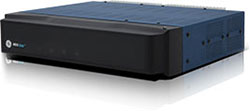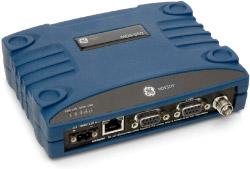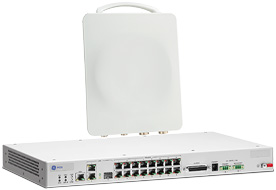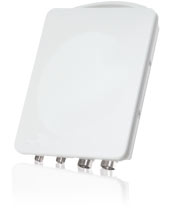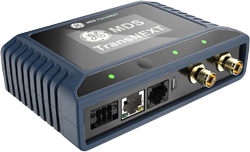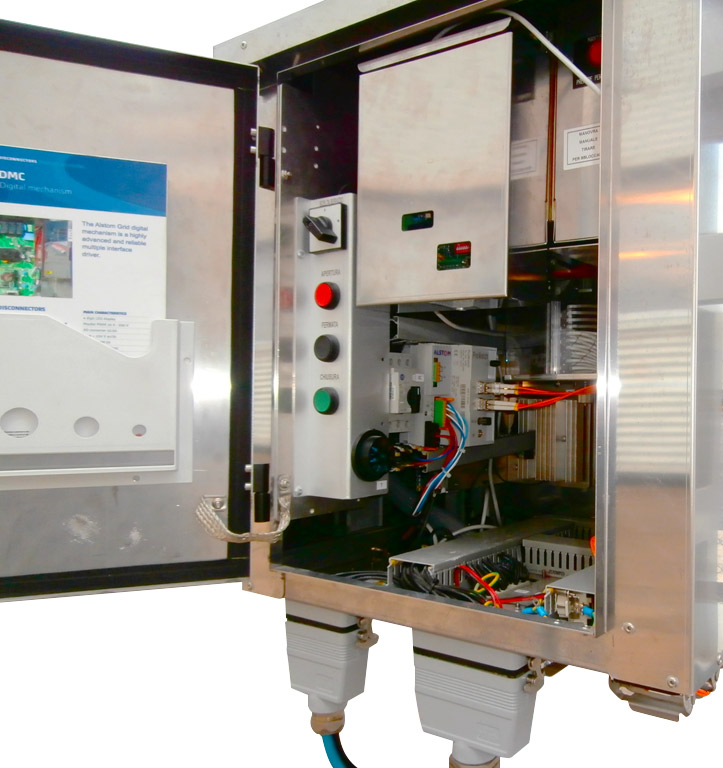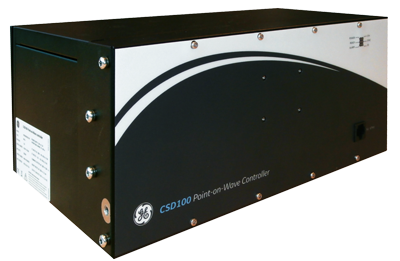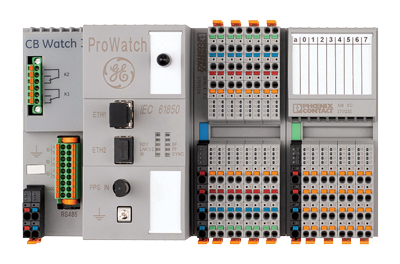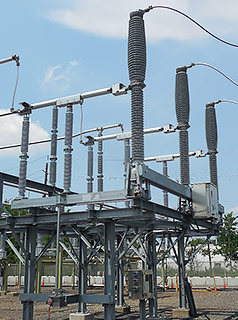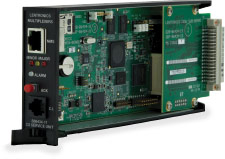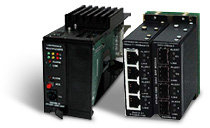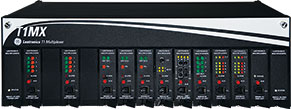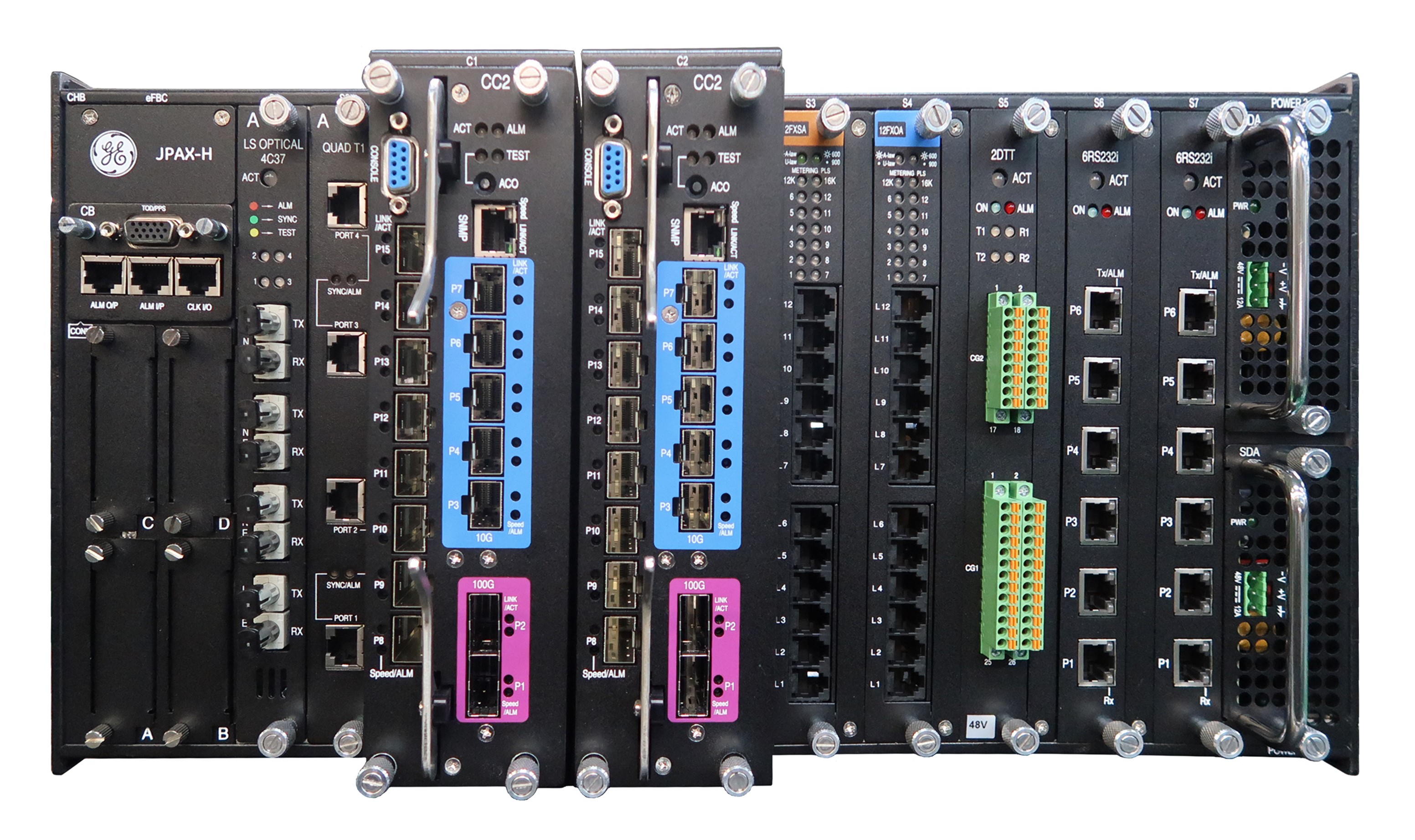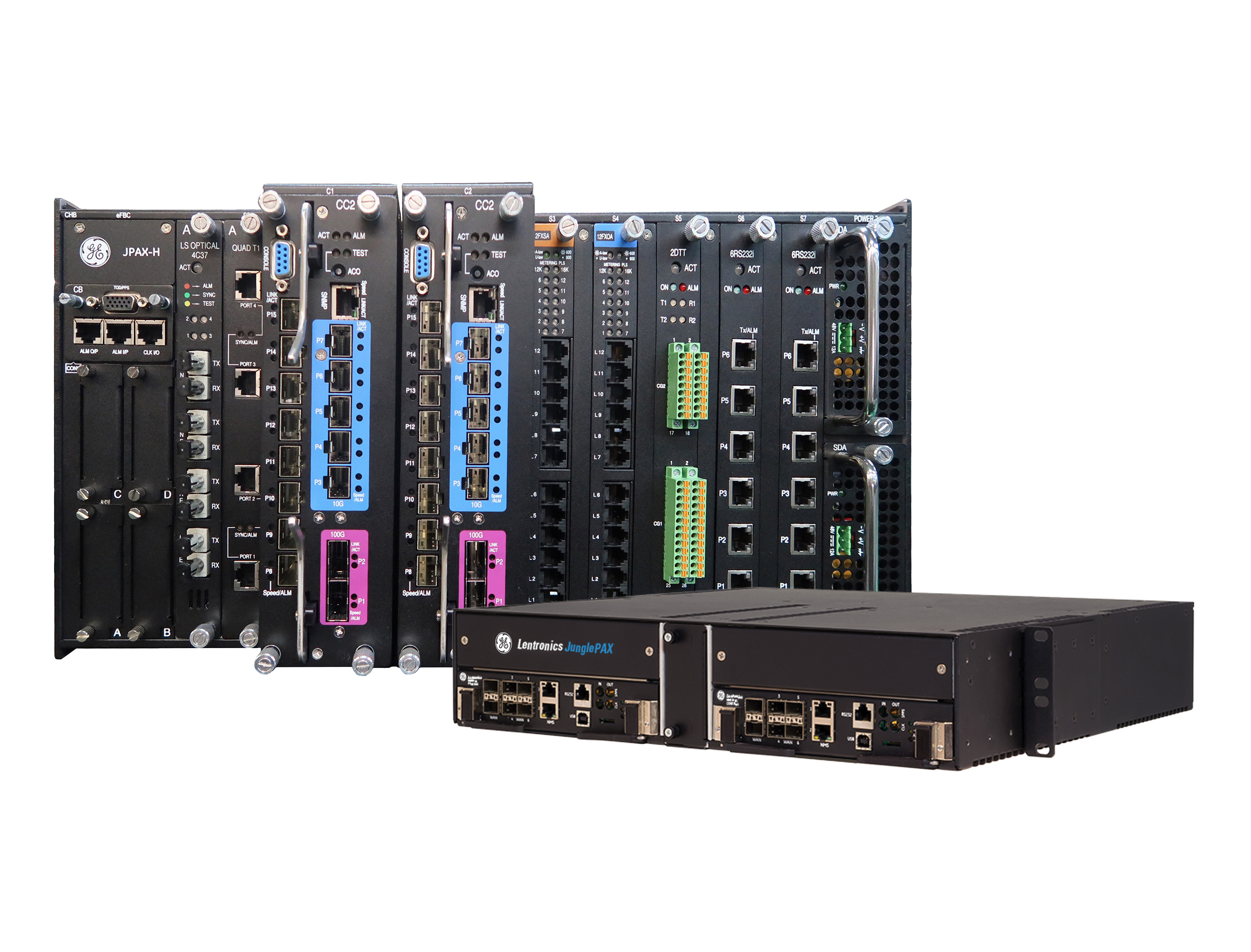MDS SD Series
Long Range IP/Ethernet & Serial SD1, SD2, SD4 & SD9
The MDS™ SD Series are industrial wireless solutions that provide long distance communications over licensed radio bands, allowing users to interface to both Ethernet and serial devices such PLCs, RTUs and meters with host monitoring and control systems.
MDS SD Series
Long Range IP/Ethernet & Serial SD1, SD2, SD4 & SD9
The MDS™ SD Series are industrial wireless solutions that provide long distance communications over licensed radio bands, allowing users to interface to both Ethernet and serial devices such PLCs, RTUs and meters with host monitoring and control systems.
SD Series Application Advantages
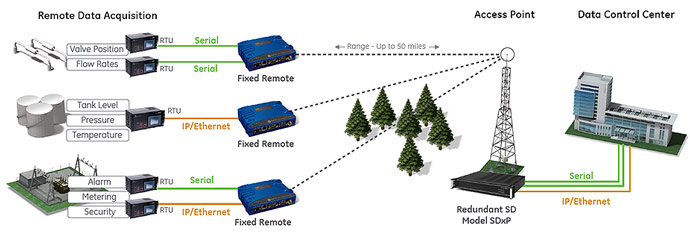
SD Series Application Advantages
- Operational temperature range from –40°C to 70°C
- CSA Class I, Div. 2 groups A,B,C,D for Hazardous Locations
- IEEE1613*, IEC 61850-3 and EN61000 for electric substation environments
Application Flexibility
- Supports two serial ports and an IP/Ethernet port simultaneously
- Broad coverage flexibility over distances up to 50 miles
- Supports Ethernet Bridging, IP to serial and serial to serial communications
- Low power consumption with sleep mode for solar and battery powered applications
- Fast-serial features with embedded terminal server functions for serial to IP/ Ethernet encapsulation
- Extend communication paths using single radio store and forward
Reliable & Scalable
- Exclusive, non-shared licensed band operation
- High performance Media Access Control for asynchronous polling and exception reporting
- Collision detection and avoidance insures data arrives at destination without lost messages
- High receive sensitivity for long distance communications
- Compatible with multiple industry protocols including Modbus, Modbus TCP, and DNP3
Secure
- AES 128-bit data encryption
- Password protected access
- VLAN data segregation
* Requires an external DC to DC converter having floating DC inputs (neither side grounded)
Long Range communications
The MDS SD Series of industrial-strength radios offer secure, reliable, long distance transmission of data for your mission critical applications. The SD Series combines 5 Watt transmit power and exceptional receive sensitivity to support wide coverage areas and maximum performance when difficult terrain or obstructions such as trees and buildings limit the effectiveness of other wireless devices. The SD Series operates in the 100 MHz(SD1), 200 MHz (SD2), 400 MHz (SD4) and 900 MHz (SD9) frequencies and allows users to select the channel size and modulation option best suited to their unique requirements. The combination of these features results in the ideal data acquisition product for error free, long distance communication.
Backward Compatibility
MDS SD Series radios can be directly added to existing MDS x710 and x790 systems, providing both "drop-in" compatibility for expansions and replacements, and adding Ethernet support. Backward compatibility preserves your investment and allows a smooth transition from a serial based SCADA infrastructure to IP/Ethernet without disrupting day-to-day operations.
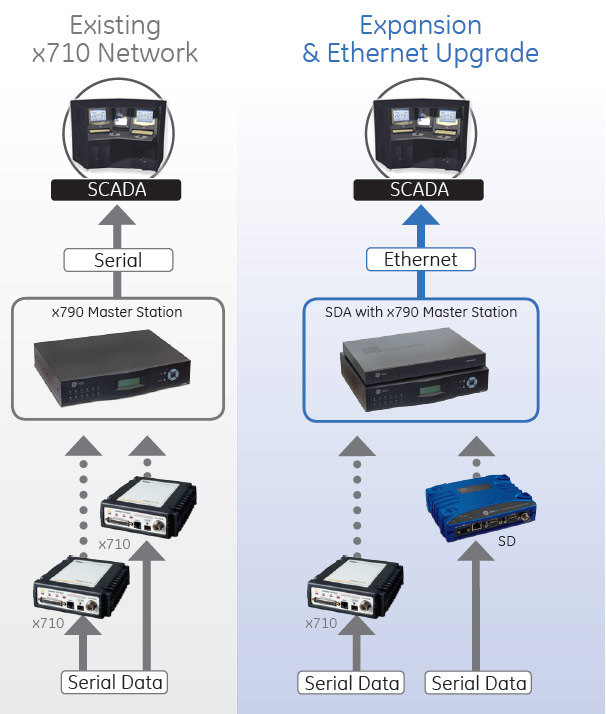
SD Series Remote
The SD1 radio operates in the 100 MHz frequency band, SD2 radio operates in the 200 MHz frequency band, SD4 operates in the 300 and 400 MHz frequency band, and the SD9 operates in the 900 MHz frequency band. Choose between models that support both Ethernet and serial, or only serial interface. The SD Series handles concurrent Ethernet and serial traffic using built-in terminal server plus industry- standard TCP or UDP protocols.
The SD Series handles concurrent Ethernet and serial traffic from multiple sources. Directly communicate to multiple PLCs using the built-in serial device server and modem-sharing device using industry-standard TCP or UDP protocols.
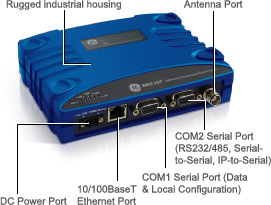
SDxP Redundant/Protected Models
The SDxP is used when applications demand no single point of failure for the communications system. The MDS SDxP incorporates two MDS SD transceivers and power supplies with automatic or manual switchover capability. On detection of a failure, the MDS SDxP switches immediately to the standby transceiver. The switchover occurs for selectable transceiver alarm conditions. Switchover also occurs when no valid packets are received in a time frame of 1–30 minutes, or upon loss of power to the operating radio. An internal backup battery is provided in AC-powered models for continued operation during a loss of primary power.

SDA Adaptor for 4790/9790 Radios
The SDA adaptor is used with 4790 and 9790 Master Stations to add IP/ Ethernet connectivity and SD features. The SDA can be ordered with new Master Stations or easily added to equipment already installed. Once connected to a 4790/9790, one (1) serial port and one (1) Ethernet port are available for connection to external systems or devices.

Recommended Products & services
MDS Master Station
Long Range IP/Ethernet and Serial
The MDS Master Stations, built upon our modular communications platform, are used with SD Series and x710 series remote radios. The MDS Master Stations support full duplex communication in a protected 1+1 warm standby transceiver configuration to provide reliability for continuous use, high duty cycle applications associated with licensed narrowband Base Station and Repeater applications. The MDS Master Station is offered in a 19 in/43.8 cm, 2 rack-unit high chassis containing an internal duplexer with options for connecting an external duplexer.
MDS Master Station
Long Range IP/Ethernet and Serial
The MDS Master Stations, built upon our modular communications platform, are used with SD Series and x710 series remote radios. The MDS Master Stations support full duplex communication in a protected 1+1 warm standby transceiver configuration to provide reliability for continuous use, high duty cycle applications associated with licensed narrowband Base Station and Repeater applications. The MDS Master Station is offered in a 19 in/43.8 cm, 2 rack-unit high chassis containing an internal duplexer with options for connecting an external duplexer.
Exceptional Reliability

In licensed systems, the Master Station is assigned the primary transmit frequency that is used to communicate to all remote radios in the network. As such, a failure of the Master Station radio can result in a network wide communication interruption. In a redundant configuration, the MDS Master has two complete full duplex SD Series transceivers and power supplies. In the event of a failure the controlling logic switches to the standby unit. Switchover can occur based upon transceiver error codes, loss of communication over a user configurable time period or loss of power. Switchover typically occurs in less than one second.
The standby transceiver is constantly operating and its operational readiness can be monitored by the user and external network management systems. For less demanding use cases, the MDS Master Station is also available in a non-redundant configuration.
Operate as Master, Repeater or Polling Remote
The MDS Master Station is used in a various operational settings depending upon the users specific use case including Master, streaming Repeater or polling Remote. In addition to full duplex, both half duplex and simplex modes are configurable by the user.
Typically, the Master Station is located where the primary connection to the user's host system or network is made. In many instances however, clear RF line of sight to remote radio locations cannot be achieved at control centers or host system connection point. In these cases the Master Station can be configured as a streaming Repeater and located at optimal tower sites where line of site can be achieved. An additional Master Station is then configured as a polling Remote. Host system communication is then achieved at the polling Remote through the Repeater to all remote radio locations.
Master, Repeater or Polling Remote
The MDS Master Station can be configured as a Master streaming Repeater and Polling Remote when frequency plans and tower locations and RF line-of-site considerations drive flexibility in enterprise network connections.
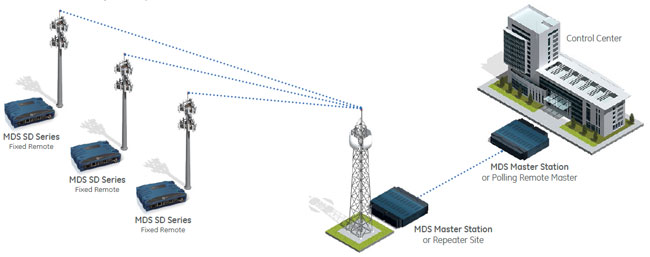
Backward Compatibility
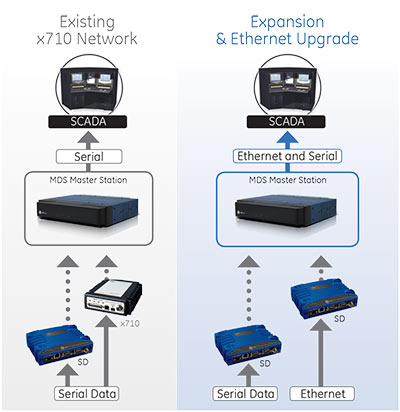
The MDS Master Station features backward compatibility with MDS x790- x710 networks including 2000 and 4000 series. Backward compatibility preserves your investment and provides maximum flexibility for users to migrate from complete x710 radio to hybrid x710 and SD radios ultimately achieving a full SD radio deployment for evolving to enhanced serial and IP/Ethernet functionality. When a full SD network is achieved, users can broadcast switchover to higher modulation and IP/Ethernet services to all remote radios.
The Master Station is fully compatible with "B" modem analog x710 radios and supports switched carrier, continuously keyed or key on data operation as well as configurable PTT and CTS delays.
Modular Communication Platform
Ease of maintenance and serviceability are two additional benefits derived from our modular communications platform. All components in the MDS Master Station are easily accessed from the front panel eliminating the need to remove the chassis should module replacement be required. In addition, redundant transceivers and power supply modules are hot swappable to ensure that the MDS Master Station remains fully operational during service periods after a failover.
All power, serial and Ethernet connections are made to the front panel. Antenna and external filter connections are made in the rear of the unit.
Exterior View – Front Panel
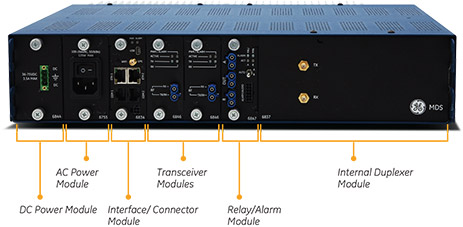
Interior View
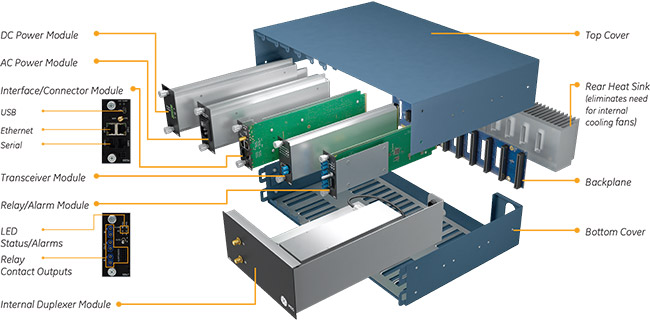
Technical Specifications
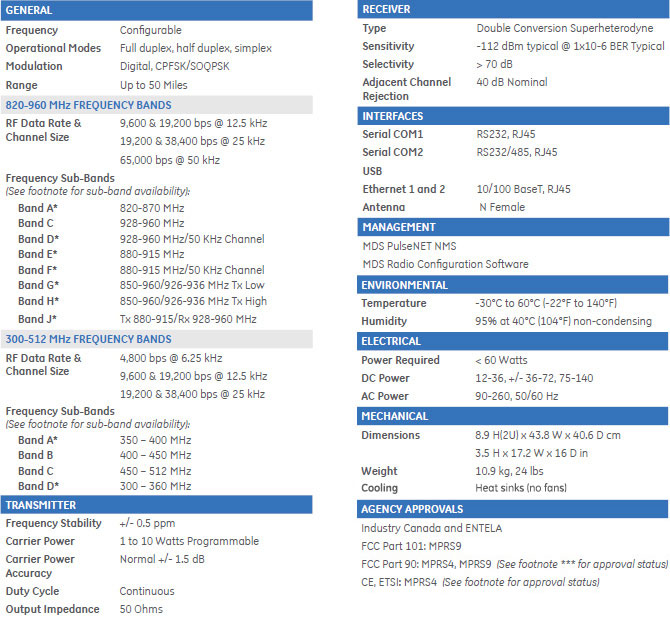
Footnotes
* Check with factory for availability of specific sub-bands.
*** Part 90 approval is pending.
Recommended Products & services
RPH3
Controlled switching device
GE Vernova's RPH3 controlled switching device has been phased-out and replaced by our new CSD100 advanced Point-on-Wave controller.
RPH3
Controlled switching device
GE Vernova's RPH3 controlled switching device has been phased-out and replaced by our new CSD100 advanced Point-on-Wave controller.
CSD100
Point-on-Wave Controller
Point-on-wave switching is a technique consisting in operating AC system switchgear / circuit-breaker at optimum time to reduce switching transients
GE Vernova’s CSD100 is an advanced Controlled Switching Device for high voltage AC circuit-breakers. The ability to mitigate switching transients is becoming a key issue for today’s grids as the generated stresses lead to power quality problems and accelerated aging.
CSD100
Point-on-Wave Controller
Point-on-wave switching is a technique consisting in operating AC system switchgear / circuit-breaker at optimum time to reduce switching transients
GE Vernova’s CSD100 is an advanced Controlled Switching Device for high voltage AC circuit-breakers. The ability to mitigate switching transients is becoming a key issue for today’s grids as the generated stresses lead to power quality problems and accelerated aging.
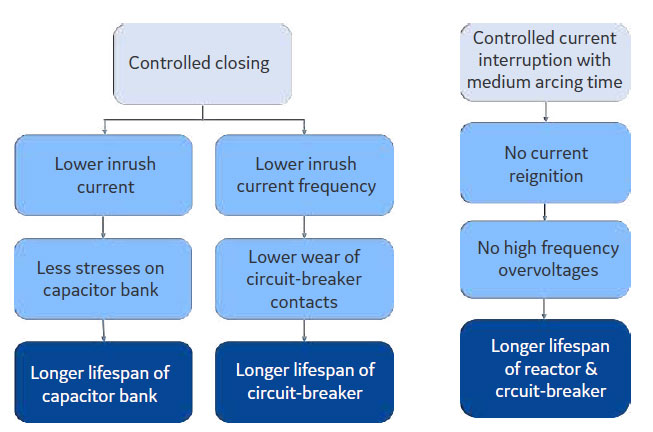 CSD100 Operation Cycle
CSD100 Operation Cycle
Controlled Switching of Load compensation
CSD100 is an advanced controlled switching device for high voltage AC circuit-breakers for any kind of application.
Challenges
Intermittent power sources generate important daily load variations. Capacitor banks and shunt reactors help stabilize and improve the power factor. Acting as reactive power generators, their switching needs to be controlled precisely to mitigate the related electrical transients. It allows to limit damageable stress on the circuit-breaker and the compensation load.
Reactive Power Compensation in Safe Conditions
CSD100, used with GE Vernova's advanced circuit-breakers, is a cost-effective solution to reduce stress on reactive power compensation equipment and increase their lifetime.
Benefit :
- Safe switching in reactive power compensation
- Drastic reduction of electrical transients
- Drastic reduction of stress on equipment
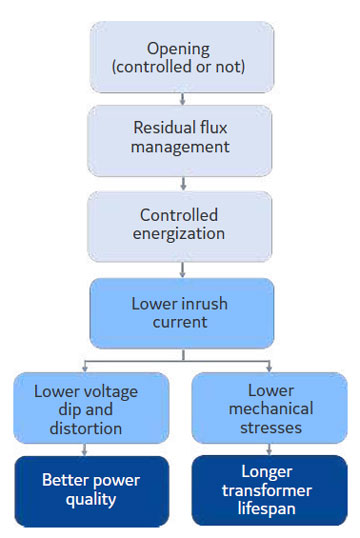 CSD100 Operation Cycle
CSD100 Operation Cycle
Controlled Switching of Overhead Lines
CSD100 is an advanced controlled switching device for high voltage AC circuit-breakers for any kind of application.
Challenges
Connecting and disconnecting intermittent power sources -such as wind or solar farms, pumped storage or gas power plants- to the country grid may generate switching transients with damageable consequences for the transformer and the power quality (high inrush currents, voltage dip, protection trip).
Safe Connection of the Transformers to the Grid
CSD100 reduces power transformer inrush current and voltage deep by energizing each phase (winding) at magnetic flux continuity condition, considering the transformer core residual flux.
CSD100 takes into consideration the transformer magnetic flux in order to switch and connect the transformer to the lines when the source flux matches the transformer residual flux. The inrush current and voltage dip are minimized. The power quality is improved, the transformer lifetime is extended.
Benefits:
- Safe connectivity of intermittent generation
- Voltage dip reduction
- Inrush current mitigation
- Transformer stress limitation
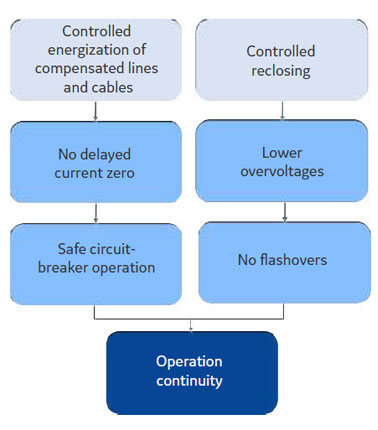 CSD100 Operation Cycle
CSD100 Operation Cycle
Controlled Switching of Overhead Lines
CSD100 is an advanced controlled switching device for high voltage AC circuit-breakers for any kind of application.
Challenges
Power generation sources are often located far from main consumption areas. As a result, large amounts of energy need to be transmitted over long distances. The random circuit- breaker switching of no-load lines generates a travelling voltage wave which, provokes an over-voltage along the length of the line. Also, auto-reclosing of the line circuit-breaker may cause even larger over-voltages than simple closing due to trapped charge on the line.
Safe Switching of Overhead Lines
CSD100 is a cost-effective solution to limit overvoltage during closing and auto-reclosing of line circuit-breakers.
CSD100 helps to optimize line design and could generate important savings at the conception stage. The value of over-voltages directly determines the insulation and protection levels of the lines, as well as their cost.
Securing Your Primary Equipment
- With extensive data acquisition and storage capabilities, the CSD100 allows for extensive monitoring and optimized switching in order to protect equipment. Together, with its digital communication abilities, the CSD100 plays a key role in your asset performance management strategy
- CSD100’s design simplifies substation integration
- Built-in cybersecurity features, in line with the latest NERC, IEC, and IEEE standards, ensure a high security level
Benefits:
- Improved overhead lines and cables management
- Safe closing and auto-reclosing
- Optimization of insultation levels
- Optimization of overhead lines designs
- Reduction of surge arrestor stress
Controlled switching of multiple loads
CSD100 is an advanced controlled switching device for high voltage AC circuit-breakers for any kind of application.
Challenges
Depending on substation architecture, one single circuit-breaker will operate different loads. Maintain optimal performance in such situation is a real challenge.
One single Controlled Switching Device per Circuit-breaker
GE Vernova has developed for the CSD100 a multiple load switching feature, allowing to use one single device per circuit-breaker.
- Whatever the substation architecture with tie circuit breaker or meshed arrangements
- Whatever the operating mode, for example:
- Power plant black-start from the grid (line or cable)
- Compensated line or only grid compensation with shunt reactor
- Variable neutral position (or grounding) for compensation asset
The positions of the substation apparatus (circuit-breakers, disconnector switches) define the load to switch. The CSD100 selects the programmed switching strategy accordingly.
Benefits:
- Controlled operations of single circuit-breaker siwtiching several loads
- Useful for any kind of substation architecture/configuration
- Switching strategy automatically adapts to the real time
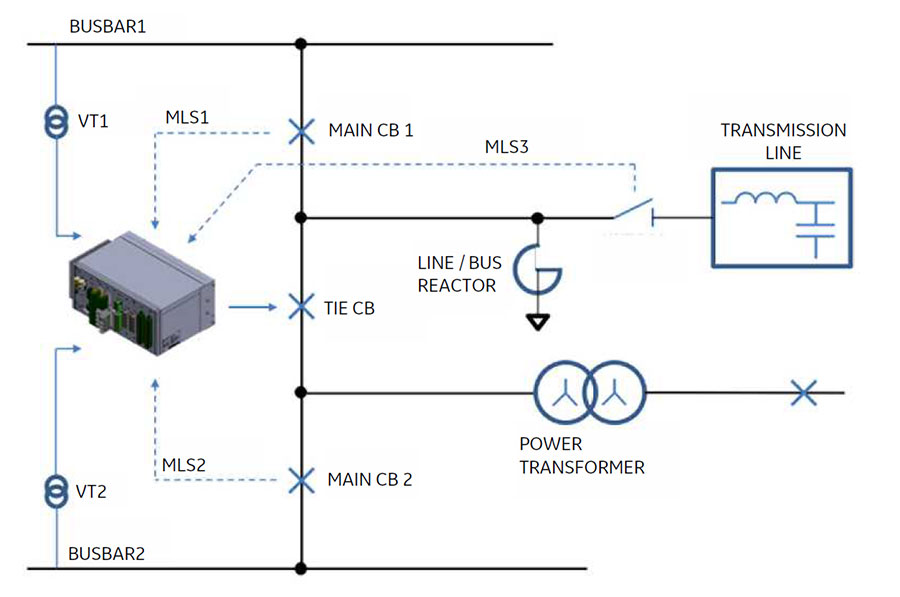 Example of multiple load switching. Circuit breaker may be used to switch line or reactor or a power transformer.
Example of multiple load switching. Circuit breaker may be used to switch line or reactor or a power transformer.
Recommended Products & services
Compact Switchgear
Compact Air-Insulated Breaker Assembly CABA
Compact switchgear
GE Vernova’s Compact Air-Insulated Breaker Assembly (CABA) is a modular, compact switchgear system combining a live tank circuit breaker, double sided disconnect switch and other AIS equipment mounted on a common frame. It can be installed in greenfield substations or retrofit into an existing substation. CABA can be installed on existing foundations and is designed for space savings due to its compactness.
Compact Switchgear
Compact Air-Insulated Breaker Assembly CABA
Compact switchgear
GE Vernova’s Compact Air-Insulated Breaker Assembly (CABA) is a modular, compact switchgear system combining a live tank circuit breaker, double sided disconnect switch and other AIS equipment mounted on a common frame. It can be installed in greenfield substations or retrofit into an existing substation. CABA can be installed on existing foundations and is designed for space savings due to its compactness.
GE Vernova Advantage
CABA leverages GE Vernova’s expertise in high voltage equipment, including circuit breakers and disconnect switches, to provide a reliable substation solution. GE Vernova has more than 100,00 circuit breakers with spring-spring operating mechanisms in service throughout the world.
Key Features
- Complete factory assembly allows CABA to easily replace existing equipment for a high quality solution with reduced delivery time
- Ideal for replacement or upgrade of circuit switcher installations providing full circuit breaker function in the same space
- Reliable spring-spring operating mechanisms
- Meets the requirements of IEC and IEEE/ANSI standards
Key Benefits
- Modular design for green field or retrofit installations
- Improved substation protection
- No new foundations needed for retrofits with standardized modules
- Easy installation and commissioning
- Circuit breaker performance in a circuit switcher footprint
Specifications
Live Tank circuit breaker
| Rated voltage | kV | 72.5 | 145 | 245 | 245 |
| Circuit breaker type | GL 309 | GL 312 | GL 314 | GL 314X | |
| Circuit-breaker operating mechanism | FK3-1 Spring | FK3-1 Spring | FK3-6 Spring | FK3-4 Spring | |
| Rated continuous current | A | 3,150 | 3,150 | 3,150 | 3,150 |
| Rated frequency | Hz | 50/60 | 50/60 | 50/60 | 50/60 |
Rated dielectric withstand | |||||
| - Power frequency 1 minute dry | kArms | 160 | 310 | 460 | 460 |
| - BIL (1.2/50s impulse wave) | kVpeak | 350 | 650 | 900 | 1,050 |
| - 2s chopped wave kVpeak | kVpeak | 452 | 838 | 1,160 | 1,160 |
Rated short-circuit breaking capacity | |||||
| - Perioduc component | kArms | 40 | 40 | 40 | 63 |
| - percentage DC component | % | 53 | 53 | 53 | 68 |
| - First pole to clear | 1,5 | 1,5 | 1,5 | 1,5 | |
| - Interrupting time cycles | 3 | 3 | 3 | 3 | |
| - Rated short-circuit making current | kApeak | 108 | 108 | 108 | 170 |
| - Rate out-of-phase breaking capacity kA | kA | 10 | 10 | 10 | 16 |
| Rated line-charger breaking capacity (C2 Class) | A | 100 | 160 | 400 | 400 |
| Rated capacitor bank breaking capacity (C2 Class) | A | 630 | 400 | 1,200 | 1,200 |
| Rated operating sequence | o-0,3-CO-15s-CO | ||||
| Ambient temperature (without blanet heaters) | oC | ||||
| * Low temperature performerce to -50oC is available with the used of mixed gas (SF6/CF4) | |||||
Three phase disconnector - double side break
| Rated voltage | kV | 72.5 | 145 | 245 | 245 |
| Disconnect switch type | S3CD | S3CD | S3CD | S3CD | |
| Disconnect switch operating mechanism | Manual handcrank* | Manual handcrank* | Manual handcrank* | Manual handcrank* | |
| Rated frequency | Hz | 50/60 | 50/60 | 50/60 | 50/60 |
| Rated continuous current | A | 3,150 | 3,150 | 3,150 | 3,150 |
| Rated continuous current 30 minutes emergency 4100 | A | 4,100 | 4,100 | 4,100 | 4,100 |
Rated dielectric withstand (IEEE/ANSI Standard) | |||||
| - Power frequency 1 minute dry | kV | 175 | 335 | 465 | 465 |
| - Power frequency 10 second wet | kV | 146 | 275 | 385 | 385 |
| - BIL (1.2x50 per second rated withstand) | kVpeak | 350 | 650 | 900 | 1,050 |
Rated short time current | |||||
| - Three (3) second | kArms | 63 | 63 | 40 | 63 |
| - Momentary current | kA | 100 | 100 | 100 | 100 |
| - Peak current | kApeak | 164 | 164 | 164 | 164 |
| - Capacitance current switching capability | A | 1 | 1 | 1 | 1 |
| - Transformer magnetising current switching capability | A | 3 | 3 | 3 | 3 |
| Open gap length (IEEE/ANDI standard) | Inch | 22x2 | 38x2 | 50x2 | 50x2 |
| Open rotation gap | Degrees | 80 | 80 | 80 | 80 |
| Rated ice breaking capability | Inch | 0.75 | 0.75 | 0.75 | 0.75 |
| Ambient temperature (without blanet heaters) | oC | -50 to +50 | -50 to +50 | -50 to +50 | -50 to +50 |
| * Motor mechanism on request | |||||
Drawings
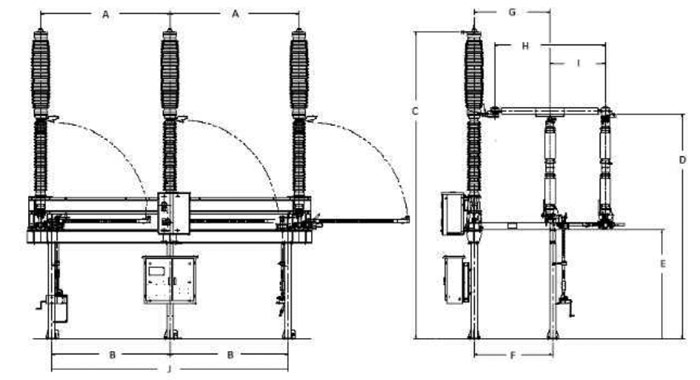
CABA Dimensions

Recommended Products & services
GIS Digital Solutions
For electrical networks up to 800 kV
GE Vernova's GIS digital solutions meet the challenges of electrical networks up to 800 kV. The portfolio includes the BWatch digital gas monitor, PDWatch partial discharge monitor, RPH3 controlled circuit breaker switching as well as low power (non-conventional) current and voltage transformers.
GIS Digital Solutions
For electrical networks up to 800 kV
GE Vernova's GIS digital solutions meet the challenges of electrical networks up to 800 kV. The portfolio includes the BWatch digital gas monitor, PDWatch partial discharge monitor, RPH3 controlled circuit breaker switching as well as low power (non-conventional) current and voltage transformers.
BWatch provides digital gas monitoring for:
- Insulating gas monitoring (density, pressure, temperature, trends, losses)
- Internal arc localization
- Operation monitoring (circuit-breaker, disconnector, earthing switch)
PDWatch provides PD monitoring via UHF signals analysis for:
- Off-line monitoring
- Continuous on-line monitoring
CBWatch Circuit Breaker Monitoring
- Compact and modular online monitoring solution for high voltage circuit breakers
- Improves operational availability with health and condition-based monitoring of key performance parameters
- Able to detect even small SF₆ leaks to optimize gas refill operations
CSD100 Point-on-Wave Controller
- Mitigate switching transients
- Enables reliable connection of intermittent power generation sources to the grid
- Provides advanced switching of reactive power compensation and long overhead lines
Low-power (non-conventional) current and voltage transformers for:
- Perfect alignment with Smart Grid concepts, through IEC standard communication protocols
- Saturation-free behavior
- Ability to cope with very high current dynamic
- Personal safety
Recommended Products & services
Lentronics E1MX
Multiplexer
Multiplexing Solutions for Critical Communications
The Lentronics™ E1MX Multiplexer is a powerful, flexible and reliable solution for converged service networks. The E1MX extends critical channel access into harsh utility environments over microwave radio, leased line and dedicated fiber optic or copper cable networks.
Lentronics E1MX
Multiplexer
Multiplexing Solutions for Critical Communications
The Lentronics™ E1MX Multiplexer is a powerful, flexible and reliable solution for converged service networks. The E1MX extends critical channel access into harsh utility environments over microwave radio, leased line and dedicated fiber optic or copper cable networks.
Recommended Products & services
Lentronics TN1Ue
SDH Multiplexer
Powerful and Flexible Multiplexing Solution
The Lentronics™ TN1Ue SDH Multiplxer delivers powerful optical networking solutions for critical communications applications. With a wide range of tributary interface units, the TN1Ue provides both transport and access capabilities for voice, data, IP/Ethernet WAN, video and utility teleprotection traffic in a single package. Harsh environment ready, including a special metal cage enclosure to satisfy ETSI EMC requirements, the modular TN1Ue delivers flexible, secure, and reliable communications
Lentronics TN1Ue
SDH Multiplexer
Powerful and Flexible Multiplexing Solution
The Lentronics™ TN1Ue SDH Multiplxer delivers powerful optical networking solutions for critical communications applications. With a wide range of tributary interface units, the TN1Ue provides both transport and access capabilities for voice, data, IP/Ethernet WAN, video and utility teleprotection traffic in a single package. Harsh environment ready, including a special metal cage enclosure to satisfy ETSI EMC requirements, the modular TN1Ue delivers flexible, secure, and reliable communications
Recommended Products & services
Lentronics TN1U
SDH Multiplexer
Powerful and Flexible Multiplexing Solution
The Lentronics™ TN1U SDH Multiplexer delivers powerful optical networking solutions for critical communications applications. With a wide range of tributary interface units, the TN1U has the ability to provide both transport and access capabilities for voice, data, IP/Ethernet WAN, video and utility teleprotection traffic in a single package. Harsh environment ready, the modular TN1U delivers flexible, secure, and reliable communications.
Lentronics TN1U
SDH Multiplexer
Powerful and Flexible Multiplexing Solution
The Lentronics™ TN1U SDH Multiplexer delivers powerful optical networking solutions for critical communications applications. With a wide range of tributary interface units, the TN1U has the ability to provide both transport and access capabilities for voice, data, IP/Ethernet WAN, video and utility teleprotection traffic in a single package. Harsh environment ready, the modular TN1U delivers flexible, secure, and reliable communications.
Recommended Products & services
Gridcom DXC Family
Access and Transmission Multiplexer
Reliable and fast communication is vital for continuous operation of power delivery systems and mission-critical operational services. GE Vernova’s Gridcom DXC suite of products offer hybrid platforms to enable aggregation and transport of all operational services over optical fibers.
For many years now, telecommunication networks have been undergoing significant changes. Increased bandwidth requirements and a large variety of services to be transported have led to much more versatile but also complex access and transmission equipment, adapted for the next generation of networks.
Gridcom DXC Family
Access and Transmission Multiplexer
Reliable and fast communication is vital for continuous operation of power delivery systems and mission-critical operational services. GE Vernova’s Gridcom DXC suite of products offer hybrid platforms to enable aggregation and transport of all operational services over optical fibers.
For many years now, telecommunication networks have been undergoing significant changes. Increased bandwidth requirements and a large variety of services to be transported have led to much more versatile but also complex access and transmission equipment, adapted for the next generation of networks.
Fulfilling Utility Requirements
- Access cross-connect Gridcom DXC (PDH)
- Enhanced Digital cross-connect Gridcom eDXC (PDH/SDH/SONET/MPLS-TP/CE)
- Transport cross-connect Gridcom DXC-S (SDH/SONET/MPLS-TP/CE)
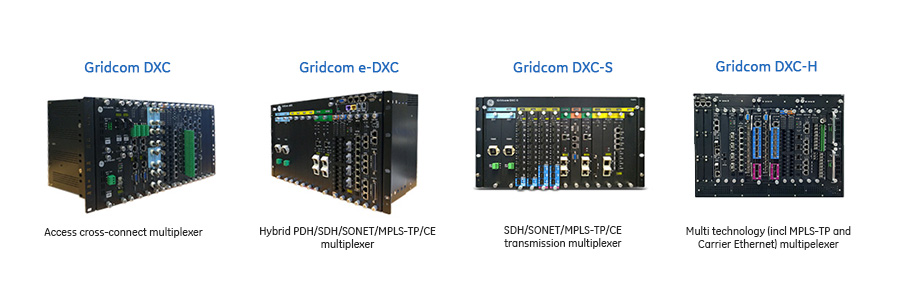
The Gridcom DXC/eDXC offers generic slots capable of supporting such interfaces as E1/T1, Ethernet 10/100Mb compatible with IEC 61850, xDSL, G.703, RS232, RS422, RS485 V35, X21, 2/4W E&M, FXO, FXS, Terminal Server, C37.94, as well as short and long haul optical interfaces. All vital parts, such as the power supply and the processing board can also be 1+1 protected.
The Gridcom eDXC/DXC-S/DXC-H provides enhanced capacities on transmission STM1/4/16, MPLS-TP, Carrier Ethernet, 1GE and 10 Gigabit Ethernet connectivity and Gridcom eDXC supports all PDH boards available on e-terragridcom DXC equipment.
DXC-H supports MPLS-TP LSP 1:1/1+1 protection and ERPS, with protection switching time<50ms. Ethernet, MPLS section, and end-to-end OAM are also provided for monitoring service integrity and performance. The DXC-H’s powerful functions enable customers to provision a service-grooming hub, ring, or mesh packet network with ultimate ease.
Reliability & Availability
By concept and design, Gridcom DXC/eDXC/DXC-S is a cost-effective solution to match a high level of availability and harsh environmental constraints.
In addition, it offers a modular approach in terms of protection mechanisms like controller redundancy, shared power supply units as well as 1+1 protection for all transmission and optical interfaces, providing a suitable solution to critical applications.
Management System
Different management solutions are available, answering to different network complexities and customer maintenance organizations for remote configuration and management:
- iNET: Element Management Layer, this solution responds to a centralized monitoring of equipment with Graphical User Interface (GUI).
- iNMS: Network Management Layer is the right solution to fully operate a complex network. In addition to all conventional features usually proposed for the backbone level (Security, graphical user interface, statistics, etc), iNMS includes versatile tools for automatic path creation and configuration of equipment simply by a simple "mouse click."
- High-availability schemes are available for both iNET and iNMS.
- All equipment are SNMP native and offer direct compatibility with the GE Vernova telecom management system Sentinel.
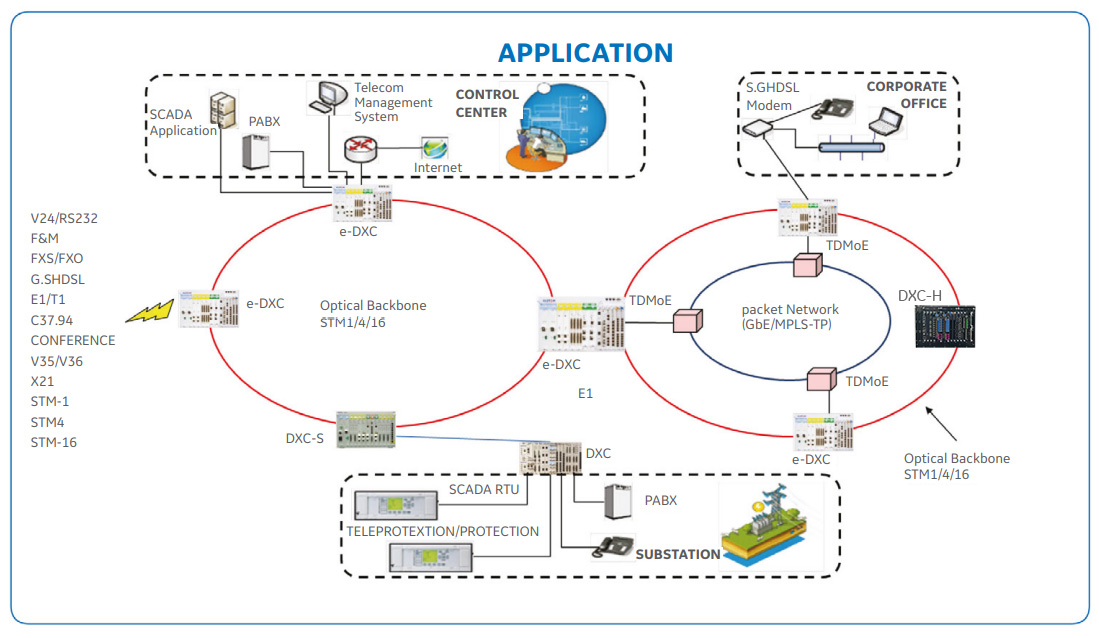 Application Network Example
Application Network Example
